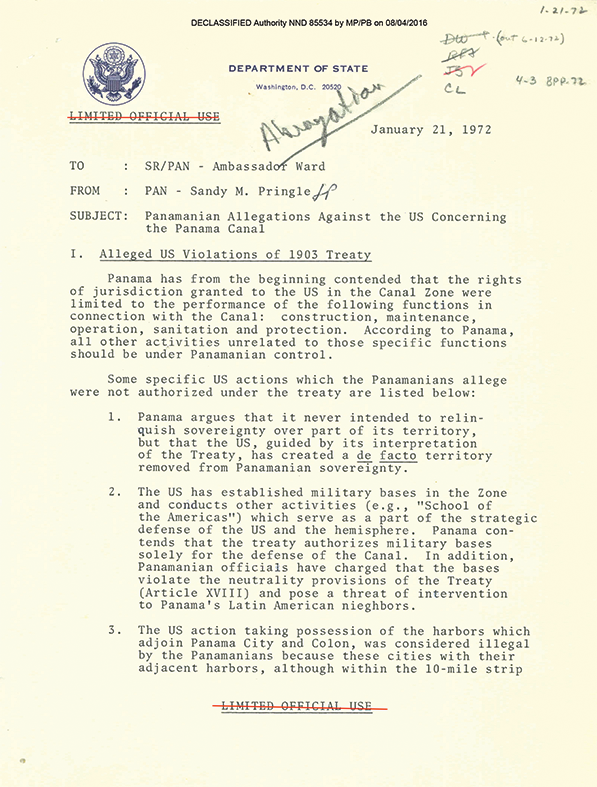
National Archives’ Declassification Center Releases Panama Canal Diplomatic Records
By Kerri Lawrence | National Archives News
WASHINGTON, November 7, 2017 -- The National Archives recently released a number of records that provide insight and perspective into diplomatic relations between the United States and Panama from 1959 to 1973.
The National Archives' National Declassification Center (NDC) released 255 pages of State Department records dealing with treaty negotiations, interactions between the American Embassy and U.S. Government agencies on the Panama Canal, the impact of Panamanian politics and elections on treaty negotiations, and the general unrest caused by the U.S. presence in the Canal Zone.
Madeline Proctor, director of the Evaluations and Special Projects Division with the NDC, explained the significance of this record release.
“Over the years, selected records from this collection and for this time period have been viewed by only a few researchers," Proctor said. "But now is the first time the majority of these records are available for research.”
The records cover an important period in U.S. foreign relations with Panama, providing insight into how the Panama Canal and internal politics within Panama affected the development and execution of U.S. policy with the country, according to Proctor.
“This opportunity will possibly allow a reassessment of the many forces, events, and policies that led to the eventual turnover of the Panama Canal,” she said.
The Panama Canal, an American-built 50-mile-long waterway that crosses the Isthmus of Panama, connects the Atlantic and the Pacific oceans. It was the largest engineering project of its time and is still considered a modern marvel of the world to many. It provides a crucial shortcut for ships, using a system of locks to lift ships 85 feet above sea level.

